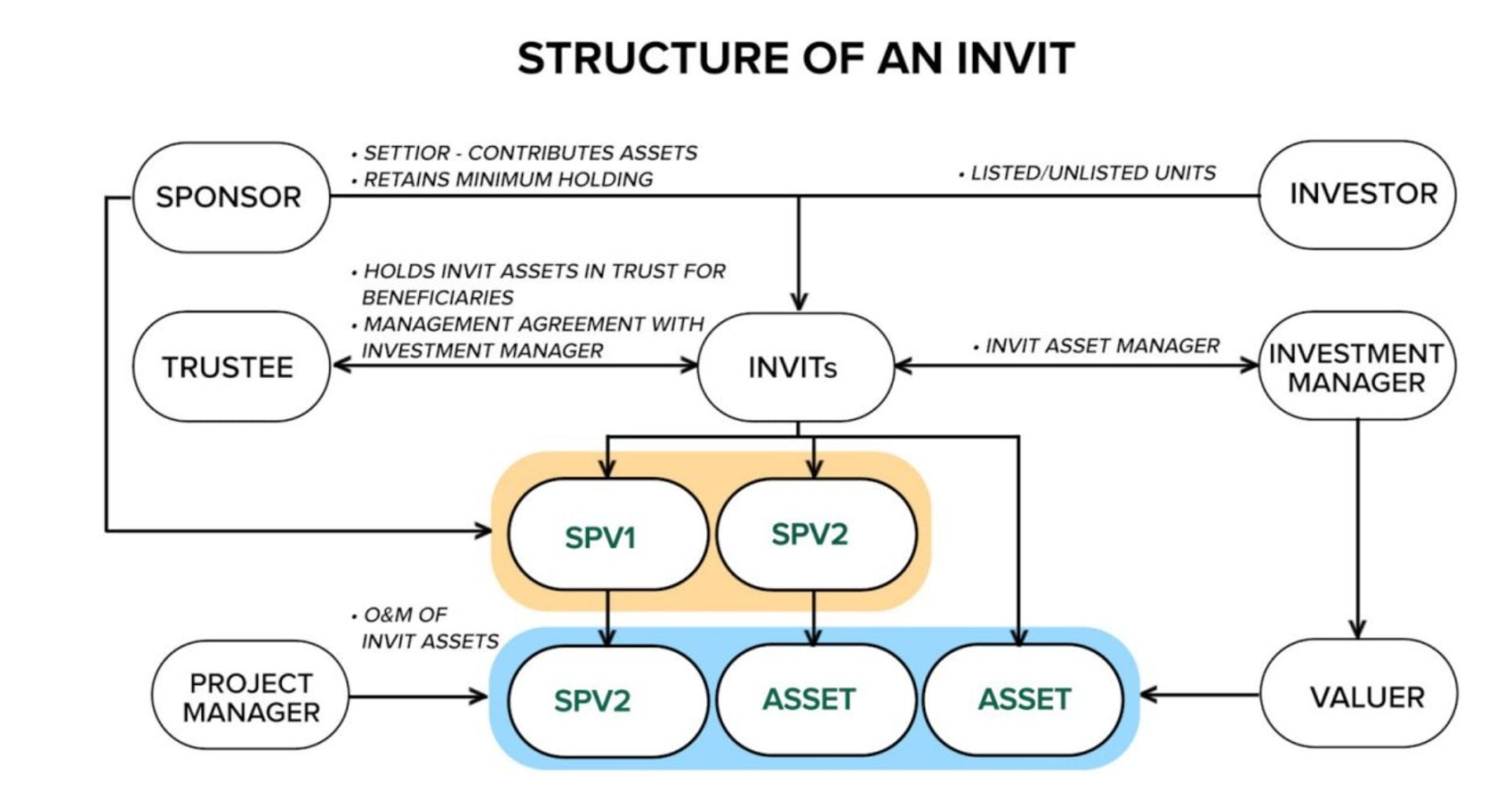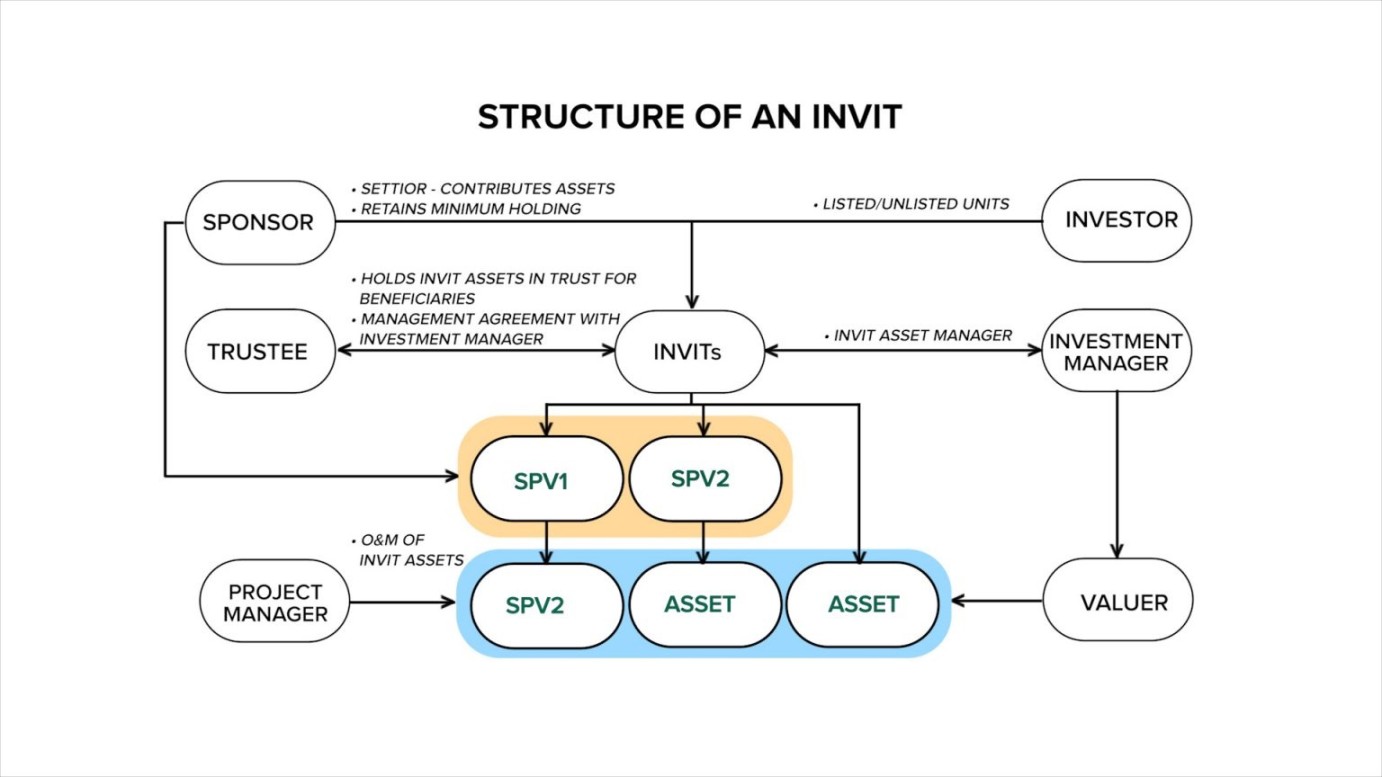Infrastructure Investment Trusts (InvITs): A Comprehensive Guide

Introduction
Infrastructure Investment Trusts (InvITs) have emerged as a significant financial instrument in India, facilitating investment in the country’s crucial infrastructure sector. Introduced in 2014 by the Securities and Exchange Board of India (SEBI), InvITs aim to attract a broader investor base towards infrastructure projects, contributing to India’s economic growth.
Understanding InvITs: Definition and Structure

InvITs are essentially trusts that pool funds from investors to invest in completed or under-construction infrastructure projects. These projects can encompass a wide range of sectors, including roads, highways, power transmission lines, ports, airports, railways, and telecommunications towers.
The structure of an InvIT typically comprises four key entities:
1. Sponsor: The sponsor, typically an infrastructure developer or company, establishes the InvIT and manages its overall operations.
2. Trustee: The trustee, an independent financial institution, safeguards the interests of InvIT unitholders and ensures compliance with regulatory requirements.
3. Investment Manager: The investment manager, an expert in infrastructure investments, oversees the selection, evaluation, and management of the InvIT’s portfolio of infrastructure projects.
4. Project Manager: The project manager, often the sponsor or a designated entity, handles the day-to-day operations and maintenance of the infrastructure assets.
Investment Mechanism and Returns
InvITs raise capital by issuing units to investors, who become unitholders. These unitholders own a proportionate share in the InvIT’s portfolio of infrastructure projects. The InvIT generates income from the tolls, user fees, or other revenue streams associated with these projects. This income is then distributed to unitholders in the form of dividends, providing them with a regular stream of returns.
Benefits of Investing in InvITs
InvITs offer several advantages to investors, including:
1. Regular Income: InvITs are mandated to distribute a significant portion of their income to unitholders as dividends, ensuring a steady stream of income for investors.
2. Exposure to Infrastructure Sector: InvITs provide exposure to India’s growing infrastructure sector, which is expected to drive long-term economic growth.
3. Tax Benefits: InvITs offer certain tax benefits, such as lower withholding tax on dividends compared to equity shares.
4. Professional Management: InvITs are managed by experienced professionals with expertise in infrastructure investments.
5. Transparency and Regulation: InvITs are subject to SEBI regulations, ensuring transparency and investor protection.
Risks Associated with InvITs
Despite their potential benefits, InvITs also carry certain risks that investors should consider:
1. Project Risks: The performance of InvITs is directly linked to the underlying infrastructure projects. Delays, cost overruns, or operational issues can impact project returns and, consequently, InvIT distributions.
2. Interest Rate Risk: InvITs may be exposed to interest rate risk if their financing is linked to variable-rate debt. Rising interest rates could increase borrowing costs and impact distributions.
3. Regulatory Changes: Changes in regulatory policies or taxation could affect the operational and financial performance of InvITs.
4. Liquidity Risk: InvIT units are traded on stock exchanges, but their liquidity may be lower compared to equity shares.
5. Concentration Risk: Some InvITs may have a concentrated portfolio of projects in a particular sector or region, increasing their exposure to sector-specific risks.
Suitability of InvITs for Investors
InvITs are generally considered suitable for investors with a long-term investment horizon and a moderate to high-risk tolerance. They are particularly attractive to investors seeking regular income and exposure to the growth potential of India’s infrastructure sector.
Factors to Consider Before Investing in InvITs
Before investing in InvITs, investors should carefully consider the following factors:
1. Track Record and Sponsor Reputation: Evaluate the sponsor’s track record, expertise, and financial strength.
2. Portfolio Composition and Project Risk: Assess the InvIT’s portfolio composition, diversification, and the associated project risks.
3. Financial Performance and Distribution History: Analyze the InvIT’s historical financial performance, dividend distribution history, and future distribution projections.
4. Fee Structure and Expenses: Understand the InvIT’s fee structure, management fees, and other associated expenses.
5. Investment Horizon and Risk Tolerance: Align the investment with one’s risk tolerance and long-term investment horizon.



